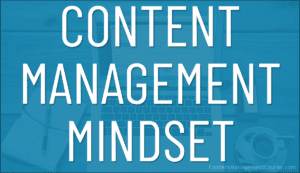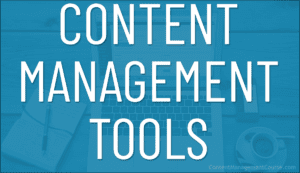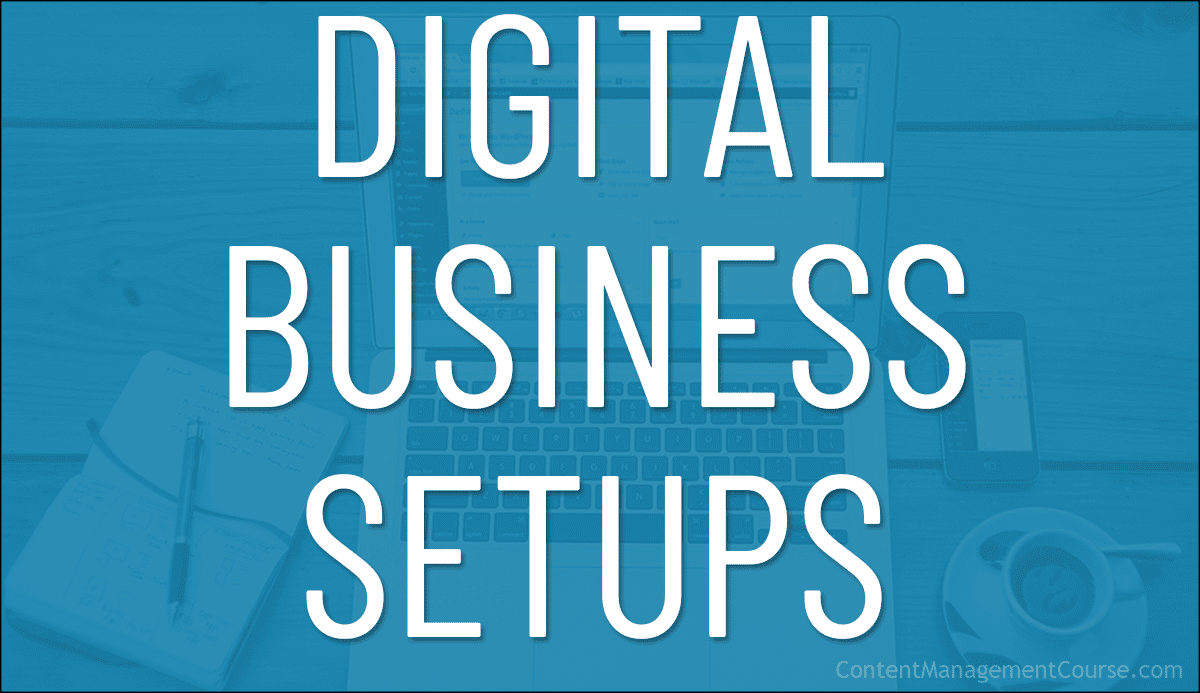Digital Business Setups
This lesson looks at different kinds of digital business setups and the challenges of managing content effectively in these.

In previous lessons, we looked at the role of the content manager and where this role fits within the organization of a digital business structure.
We also looked at the mindset and skills required to manage content effectively in your business.
In this lesson, we look at different types of business setups that you may find yourself working in and the challenges involved in managing content in these setups.
Let’s start with…
The Ideal Setup
As discussed in our Digital Business Structure lesson, if an organization could afford to hire all the digital roles needed to run its digital presence effectively, it would ideally begin by appointing someone to oversee the development and management of all its digital business areas.
This person would then hire someone to manage all the content-related areas of the business and someone to manage all of its technical areas.

So, for an organization to effectively manage all of the areas shown below…

It would need a digital department that looks something like this…

We’ll ignore the technical areas, as this is not the focus of this course, and focus only on the content areas.
To manage content effectively, then, an organization would ideally maintain a digital department that looks something like this…

If you calculate the payroll required for all these roles, you will quickly realize that few organizations can afford to run a digital department like the one shown above.
This, however, doesn’t stop businesses from advertising for a content manager, hoping to find someone that will organize all of their content and manage all of the content-related processes and areas of their business.
Content Manager Job Descriptions – Expectations vs Reality
It’s clear from looking at advertisements for the role of content manager that many of the businesses posting ads don’t understand the three levels of decision-making as explained in the content management mindset lesson.
For example, take a look at the content manager job description below, sourced from a popular job posting site…

The responsibilities of the role advertised in this company’s job description span across all three decision-making levels:
- Executive Level = E
- Managerial Level = M
- Technical Level = T

If we map all the responsibilities listed above to the ideal digital department organization chart we created earlier, then this company is advertising for a content manager to run a digital team that looks like this…

In the above diagram, whoever ends up filling that advertised position of content manager (e.g. YOU) would have to assume all the dark-colored roles shown above, while managing a team of people in the light-colored roles (at a content manager’s salary that does not include the cumulative salaries of all those additional roles, of course!).
It might not seem obvious to companies advertising for a content manager just how many different roles and responsibilities they are actually expecting applicants for the position to assume.
Whoever ends up filling the role, however, will discover very quickly what a huge and complex task managing content is, especially if the business is chaotic as many businesses are.
So, let’s focus on a more realistic scenario and look at the challenges of managing content for an organization that does not have the resources to run an ideal digital department.
Business Setup Flowchart
From the perspective of a business with a digital presence, the need for a content manager is obvious…they want to create and publish content and they need someone to help them manage these processes.
From the perspective of the person applying for the role (e.g. YOU), however, things are not so clear-cut, so it’s useful to have a better understanding of the business structure you will be working in.
Use the flowchart below to help you determine the kind of business setup you will be managing as a content manager.

Business Setup #1 – Your Team
How many people are on the team that you will be managing?
Let’s start with the size of the team you will be working with.
If you’re the only one managing all the content in the business, then clearly you will have to assume all the roles.
This very website that you are on, for example, is an example of a one-person team (me), so I’ve assumed all the roles and do everything that needs to be done on this website, from content strategy and content planning to content production, content promotion, and content management.
If there are a few or many people in your team to help take on different roles and responsibilities, then great! It’s better than having to do it all on your own, but there are still decisions to make and challenges to address.
For example, if your team members have specific roles (e.g. illustrator, video maker, or pay-per-click ad manager), then you may still be left with a number of other roles to fill.
Business Setup #2 – Budget
“Is there a budget for hiring/outsourcing team roles?”
The next area to look at is whether or not the business has a budget to grow the team and invest in content management resources such as systems, tools, training, etc.
If you’re working with a startup, you may be expected to advise, contribute, and help lay down the foundations for digital growth and the future expansion of the organization.
In this case, you will want to understand what kind of financial resources are available or will be made available to grow the team.
Or you may join an organization that already has an established digital team and systems in place, and be expected to perform your duties within a more defined role.
Anywhere in between working with a startup or an established digital team is also an option. Every business has its own way of doing things. You may simply be told that “as we grow, we’ll find the money to hire more people and invest in better tools and systems,” and you will have to work with that.
The takeaway here is that the more people the business can afford to place into digital-based roles, the fewer hats you will have to wear, and vice-versa (i.e. the smaller the team, the more content management skills you will need and the more responsibilities you will have to assume).
Business Setup #3 – Business Strategy
“Is there a digital business strategy?”
Once you have an idea of the size of the team you will be working with and the organization’s willingness to invest in building a digital department, the next area to assess is whether the company has a digital business strategy in place or not.
A digital business strategy is a blueprint used to build a digital business presence.

If there is NO digital business strategy in place for the business, you will need to help them create one.
As explained in The Small Business Digital Manager, without a digital business strategy, things can quickly become chaotic and unmanageable, and it will be a constant uphill battle to try and stay on top of things.
If there is a digital business strategy in place, then everyone in your team should follow it.
Business Setup #4 – Content Strategy
“Is there a content strategy?”
As we cover in our Content Strategy training module, the digital business strategy drives the content strategy of the business, as well as other digital strategies.

If there is NO content strategy in place for the business, you will need to help them create one.
See our Content Strategy training module lessons for help in this area.
If there is a content strategy in place, then everyone in your team should follow it.
Business Setup #5 – Content Plan
“Is there a content plan?”
A Content Plan helps the business achieve its strategic objectives by formulating a plan of action specifying all the content it needs to create to connect the business with its target audience.

Different target audiences need different content because prospects, customers/clients, subscribers, members, etc. have different needs.
Different users also consume content differently, so businesses need to produce content in different formats (e.g., blog posts, videos, podcasts, email newsletters, screenshot tutorials, infographics, reports, case studies, multimedia presentations, social media posts, etc.)
If the business has NO content plan, you will need to help them create one.
See our Content Planning training module lessons for help in this area.
If there is a content plan, then everyone in your team should follow it.
Business Setup #6 – Systems & Documentation
“Are there systems and documentation for the role(s)?”
Managing content effectively for a digital business presence requires having very good systems and documentation.

If the business has NO documented systems and processes for its digital department, you will need to help them create these. This also includes tools (e.g. software) and training.
See our Systems and Tools training module lessons for help in this area.
If the business has documented systems and processes in place, then everyone in your team should follow them.
![]()
Start documenting guidelines for all the different roles that you or your team perform and make sure to keep this documentation up-to-date.
You can start with simple bullet point documents and checklists and turn these into “operation manuals” later when hiring people to fill those roles.

Summary
Few organizations can afford to maintain a digital department with specialists hired for every role in which content plays an important part.
This, however, doesn’t stop businesses from advertising for content managers. Despite what the job description says, more often than not, anyone tasked with managing an organization’s content will need to fulfill many additional duties and responsibilities to perform successfully in the role.
The better you understand the digital setup of your organization, the clearer you will be about the challenges involved in managing its content and how to address these.
Useful Resources
In addition to completing the lessons in this training module, we recommend the following resources:
- The E-Myth: Why Most Small Businesses Don’t Work And What To Do About It – Michael E. Gerber’s classic book provides valuable information on how to stop working in your business and start working on your business.
- Digital Business Video Courses – Video courses to help you develop the digital skills you need to manage content effectively.
- WordPress User Manual – A detailed and comprehensive step-by-step WordPress user manual for non-technical website users.
- The Small Business Digital Manager – This guide covers the challenges many small businesses face running an effective digital presence and provides practical ways to address these.
- Content Troubleshooting Guide – Use this guide to troubleshoot content-related issues.
Visit our tools and resources section for additional courses, guides, and helpful tools and resources for content managers.
***
This concludes our lesson on the different setups and situations you may need to handle in the role of a content manager.
Action Steps
Please make sure to complete all lessons in this module before proceeding to the next training module.
Next Lesson
Go here for the next lesson in the Digital Business training module: Content Management Tools
Digital Business – Module Lessons
Below are all the lessons included in this module. Click on a link to go directly to the lesson:

The Role Of The Content Manager

Digital Business Structure

Content Management Mindset

Content Management Skills

Digital Business Setups

Digital Business Basics

Digital Content Team

Content-Related Jobs and Careers

Content Management Tools
***
Images: Business Meeting
